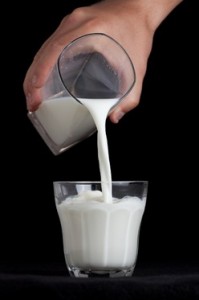 If you’re like me, or many of my patients, you likely grew up being told to drink your milk; it’s good for you. Sound familiar?
If you’re like me, or many of my patients, you likely grew up being told to drink your milk; it’s good for you. Sound familiar?
Used to be pasteurized cow’s milk was considered the healthiest thing you could drink. Today, we now know that regular, pasteurized milk can contain hormones and can aggravate allergies and upper respiratory conditions by creating mucus. Some researchers even say that nonpasteurized, raw milk, is better for you!
In addition, there are several alternative “milks” available today that rival cow’s milk in nutrients and are touted as “healthy”. In reality, however, they also have their own set of nutritional drawbacks.
With all this “milk” controversy, the question looms, do you really need milk in your diet at all? Well, let’s look at some pros and cons of regular cow’s milk, plus the alternatives available, and you can decide for yourself.
Milk: Raw versus Pasteurized
Since the 1930’s milk, whether cow, sheep, or goat, has been pasteurized. This is a process that essentially kills bad bacteria like Salmonella, E.coli and Listeria that may grow in milk. It also prolongs shelf life for mass-marketing purposes.
The health benefits of homogenized, pasteurized milk are promoted as:
- Generally free from life-threatening bacteria. The FDA states that more than 800 people have become sick from non-pasteurized milk since 1998.
- A good source of calcium and Vitamin D.
- Available in organic pasteurized.
In contrast, the health benefits of raw milk are promoted as:
- Contains beneficial raw bacteria that colonize your colon and promote better digestion.
- Maintains the natural calcium structure of milk that pasteurization is said to destroy.
- Free from antibiotics and/or hormones (organic).
- Produced from grass fed versus grain fed cows, goats.
When my patients ask me what about drinking milk, I tell them it is an individual preference in taste and tolerance. The jury is out as to whether unpasteurized milk is truly better nutritionally for you. My recommendation would be to look for pasteurized organic milk that states it is “rSBT free” (no hormones used) on its label.
What About Soy?
About 10 years ago, soy was exploding everywhere on the scene as the healthy, natural plant protein. Milk was made from it and menopausal women were drinking tons of it to stop their hot flashes and protect them against heart disease. Why? Because it contains a phytoestrogen, i.e. a “natural” estrogen and isoflavones called genistein and diadizein. Even the FDA endorsed it claiming it to be “heart healthy” as it was shown to reduce LDL (bad cholesterol) as much as 10%. However, as good as soy can be, soy also has its drawbacks:
- Can suppress thyroid hormone.
- Increases estrogen levels in men
- Can be produced from genetically modified soybeans.
- Can be processed into synthetic soy protein isolate, which can promote inflammation in the body.
- Can contain a lot of sugar.
How About Almond and Rice Milk?
Not long ago, I tried some unsweetened flavored original flavor almond milk. I put it on my cereal, and guess what? It tasted great. I was also impressed with its health benefits:
- Very low in fat and calories.
- Contains no sugar, very low in carbohydrates (unless you get the sweetened vanilla or chocolate variety).
- One serving contains 30% of daily calcium, same as regular milk!
- Contains no animal hormones.
- Contains vitamins, A, D, and E, and a good level of potassium
Then we come to rice milk. It is the highest in carbohydrates of all the milks. It is usually fortified with calcium and Vitamin D, but also can contain a lot of sugar. However, it contains no animal hormones and is virtually fat free. There is even a type of frozen “rice cream” found in the ice cream section of most grocery stores. One of the drawbacks of both rice and almond milk, however, is that they are very low in protein.
Well, there you have basically the pros and cons of regular milk versus raw, soy, rice and almond alternative “milk” beverages. If you’re a big cold cereal fan, you probably want to keep drinking milk or some variation of it. However, the only real thing people, especially children and older adults, need nutritionally from milk is it’s calcium, Vitamin D, potassium, and protein.
However, if you take calcium plus Vitamin D, and a good multivitamin supplement, and be sure you have good levels of potassium and protein from other sources, you do not need to drink any type of milk at all. I’ll leave it all up to you as to what you choose to put on your corn flakes.
Stay Well,
Mark Rosenberg, M.D.
